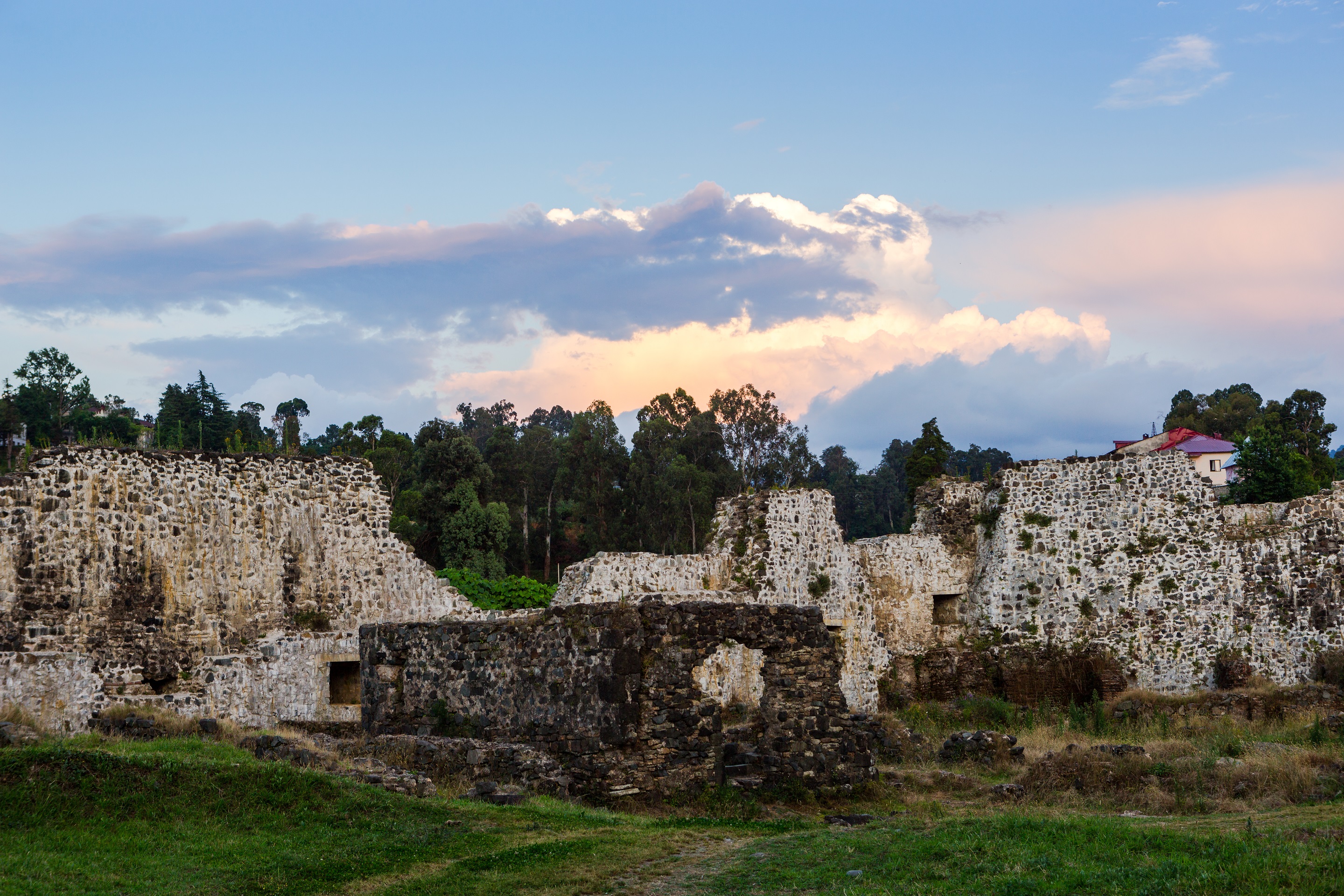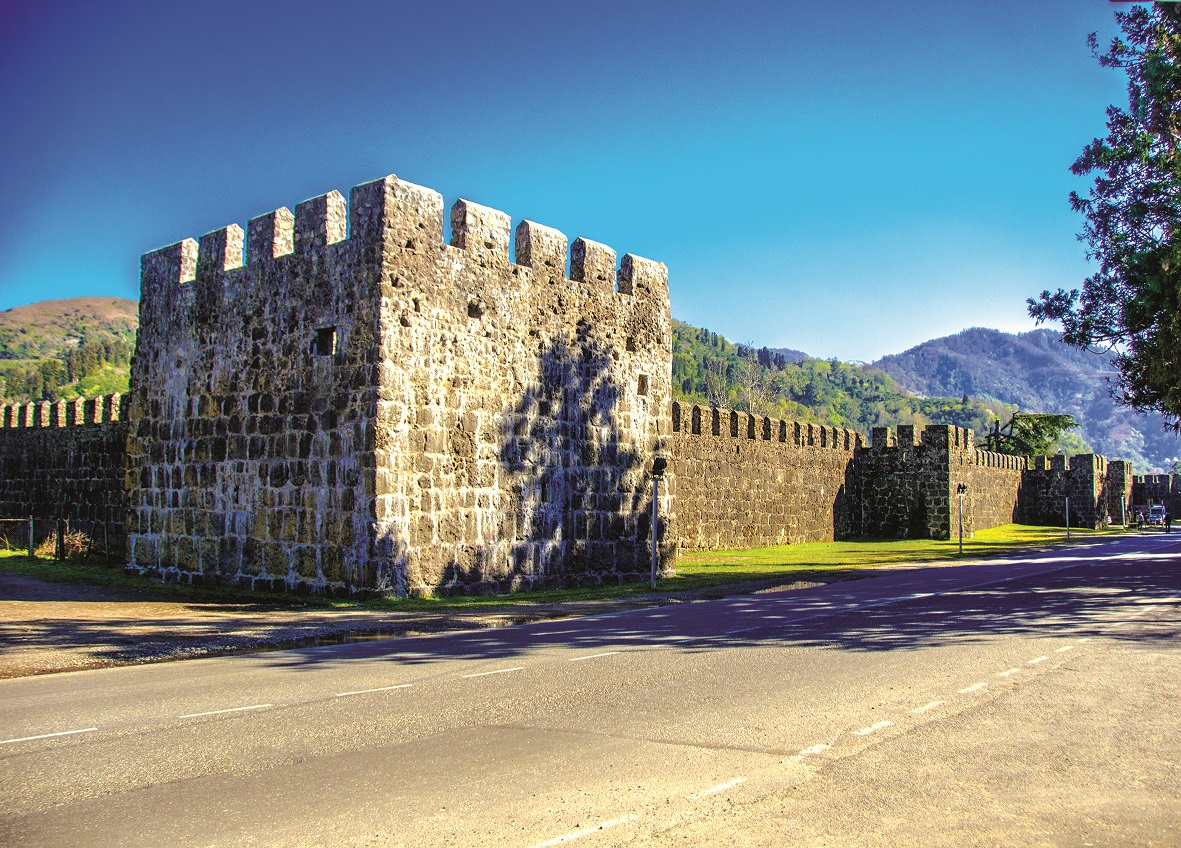Ancient fortresses Petra and Gonio
Ancient fortresses Petra and Gonio
When it comes to historical landmarks, everyone has their own standards for what makes a site worth visiting. However, in Ajara, the selection process becomes even more challenging due to the abundance of picturesque and remarkable structures that have been built by ancient civilizations. From grand palaces to humble homes, these monuments are not only a testament to the past but also offer insight into the lives, beliefs, and cultures of those who built them. So, whether you're drawn to grandeur or simplicity, be sure to take the time to explore the historical sites of Ajara on your trip, as they offer a glimpse into the evolution of humanity.
The Gonio-Apsaros Archaeological-Architectural Museum-Reserve
The Gonio-Apsaros Archaeological-Architectural Museum-Reserve is a must-see destination for history buffs visiting Ajara. The Gonio Castle, in particular, is a widely recognized monument of ancient Georgian history and material culture, known for its impressive Roman fortification architecture.
The castle is believed to have been the location of Apsaros/Apsarunt, a site mentioned in ancient and Byzantine texts and linked to the myth of the Argonauts. Additionally, according to tradition, the disciple of Christ, Matata, is buried there.
The history and significance of Gonio-Apsaros has long attracted the attention of notable figures such as Heinrich Schliemann, Niko Marr, and Theodore Uspensky, who have all conducted archaeological studies in the area.
Recent discoveries have further cemented the historical importance of the site, including evidence of Kolkhi settlements dating back to the 5th century BC and artifacts such as ceramics and tombs of the local Kolkhi population from the same era.
The origins of Gonio Castle are not well-documented in Roman and Byzantine sources, leading scholars to believe that the Romans may have utilized an existing fortress and built upon it.
The discovery of early coins from the reign of Nero (37-68 AD) in the area suggests that some parts of Colchis may have been garrisoned by the Romans as early as that time.
From strategic perspective, Gonio-Apsaros Castle was significant as it was considered the most eastern point of Rome that could be reached by sea. It also guarded the entrances to the Chorokhi and Acharistskali valleys, and its location surrounded by a mountain range provided additional protection.
The castle is rectangular in shape, measuring 222m in length and 195m in width, with a perimeter of 900m and walls reaching up to 7m in height. It was fortified with 22 towers, 18 of which still remain, and had 4 entrances, 3 of which have been blocked. The inner layout of the castle featured two intersecting streets, similar to Roman castellums(Cardo Decumanus crossing).
The construction of Gonio Castle, known for its stone walls, is believed to have begun during the early Roman period. Archaeological evidence shows that the castle was repaired and restored multiple times over the centuries. The fortress, which served as a strategic point for the Roman Empire, is located in the northern part of the historic region of Chaneti, and is now known as the Gonio-Apsaros Archaeological-architectural Museum-Reserve.
Visitors to the museum can view exhibits that date back to the early Iron Age as well as more recent artifacts from the 19th century to the 1980s.
The oldest artifacts found in the area date back to the early Iron Age and are associated with ancient iron metallurgy and cult practices.
Additionally, tombs from the 5th century BC have been discovered in the surrounding area, filling in the gap in knowledge about the pre-ancient and Hellenistic periods.
Some researchers propose that the earliest coins found in Gonio-Apsaros, which arem minted under the reign of Nero (37-68 AD), suggest that a Roman military presence existed in Colchis at that time.
The Petra Castle Archaeological-Architectural Museum-Reserve is a must-see for history enthusiasts visiting Ajara. The fortress-city of Tsikhisdziri, also known as Petra, meaning "rock" or "strong," has been described as an impregnable fortress due to its location on steep rocks. The fortress-city's strategic importance is highlighted by Procopius of Caesarea, who describes it as "inaccessible, first, by the sea, then by steep rocks, which are raised there by the shoulder of everyone: that is why it got this name." The area is rich in archaeological discoveries, dating from the Late Bronze Age to the Late Middle Ages, making it one of the most significant historical and cultural sites on the South-Eastern Black Sea coast. The fortress itself dates back to the 5th and 6th centuries, and the museum-reserve also includes the remains of a basilica, ancient palaces, and residential buildings. The museum-reserve covers an area of 7 hectares.
The citadel of Tsikhisdziri, also known as Petra, has a rich history of battles and conflicts. In the early 6th century, it saw significant battles between Iranians and Byzantines. Even long after that, it retained its strategic importance and was the site of the last battle between Russia and the Ottomans in 1878. Many Georgian warriors fought and played a crucial role in liberating Ajara from Ottoman rule.
For centuries, both foreign researchers and local Georgian society have been fascinated by the ruins of the fortress and other historical artifacts found in the area. In the 19th century, reports of valuable items and numismatic materials found in Tsikhisdziri began to appear in newspapers. In the early 20th century, many interesting ancient artifacts were discovered during the construction of cottages along the coast. These include hoards of bronze objects, some of which are now on display at the State Museum of Georgia and the State Museum of Ajara. Additionally, in the 1920s, Roman clay bricks were found in the vicinity of Natsikhari and have been housed at the State Museum of Georgia named after S. Janashia.
The collection of gold, silver, and bronze artifacts found at the fortress have been housed at the Hemritage in St. Petersburg since 1907. These items were believed to have been discovered during the construction of a country house on one of the hills south of Tsikhisdziri.
Additionally, many other numismatic finds, including coins from ancient Greek, Roman, Parthian, Sasanian, Byzantine, Arabic, and Ottoman cultures, have been connected to the area around Tsikhisdziri. Through excavations, it has been determined that the remains of the fort were located on two hills, with an inner fortress protected by a strong wall and towers. The complex also includes a palace, ancient baths, farms, and military housing, as well as a 6th-7th century basilica that was once an Episcopal Cathedral. The earliest layer of the buildings’ walls date back to the 6th century.
photos:
Gonio-Apsaros Archaeological-Architectural Museum-Reserve
Archaeological-Architectural Museum-Reserve of Petra Castle

